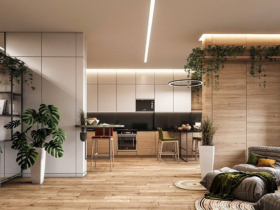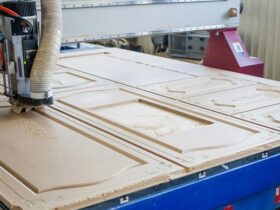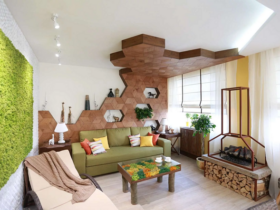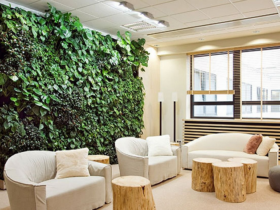Combining wallpaper is a new design solution that is increasingly appearing in a particular interior. You can buy a children’s bed and choose for it the wallpaper from which your child will develop faster. This approach can now be made to any room. In addition, you can use this method for creating various effects, such as an increase or decrease in the space of the room, the removal and approach of the ceiling, etc. D. There are 4 main ways to combine wallpaper. This article will tell about their properties and options.
The first such method of combining is the combination of horizontal stripes. To do this, we need wallpaper of the same width and texture, but they can radically change by color. It can be plain wallpaper, for example, colors such as pink and gray. You can also use wallpaper with a pattern, it is desirable that the stripes differ either in color, but the drawing is the same or a pattern, but the same color.
The second combination method is to divide the walls into horizons. The essence of this combination is to separate the walls in a horizontal plan, using wallpaper, both different colors and different textures. The combination of vinyl and textile wallpaper is very beautiful. The gluing of horizontal wallpaper is a very laborious process and requires specialists’ intervention.
The third way is to use wallpaper inserts. The ideal option is against a plain background to use pieces of wallpaper with a bright pattern. A beautiful addition to such inserts will be frames in color with the main background.
The fourth method is the allocation of various niches and ledges of the interior with different wallpaper. It is better if you use wallpapers of contrasting tones. Also, niches can be covered with wallpaper with various ornaments, and if in a modern style, then hieroglyphs.
Combining wallpaper is not only giving additional beauty and grace to your room, but also an additional way to smooth out the shortcomings of the room, such as a very large or very small height of the walls, as well as numerous niches and protrusions.








